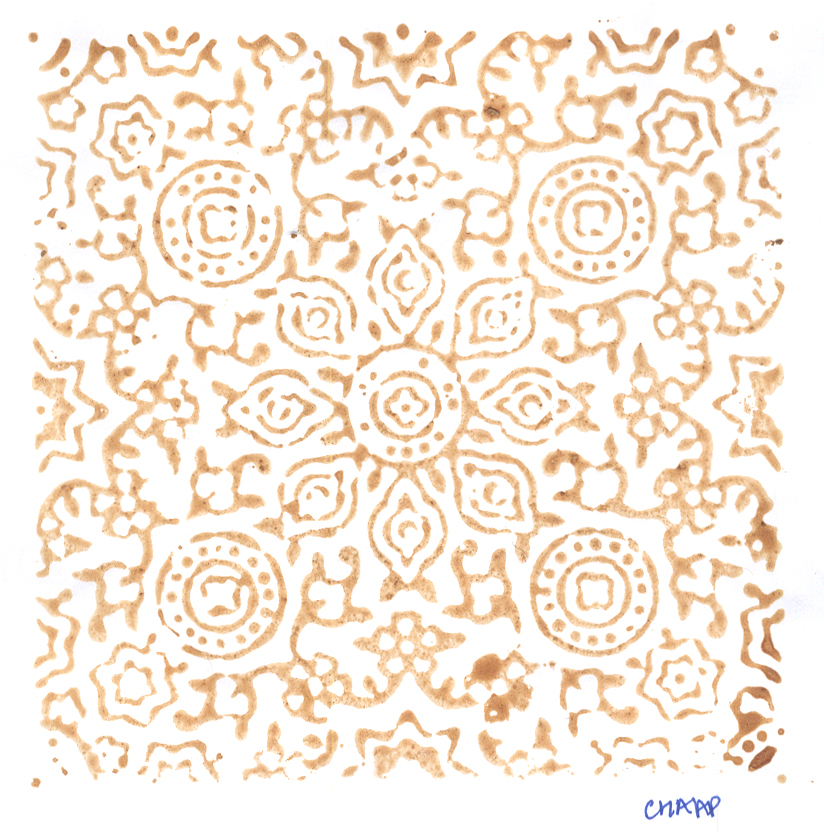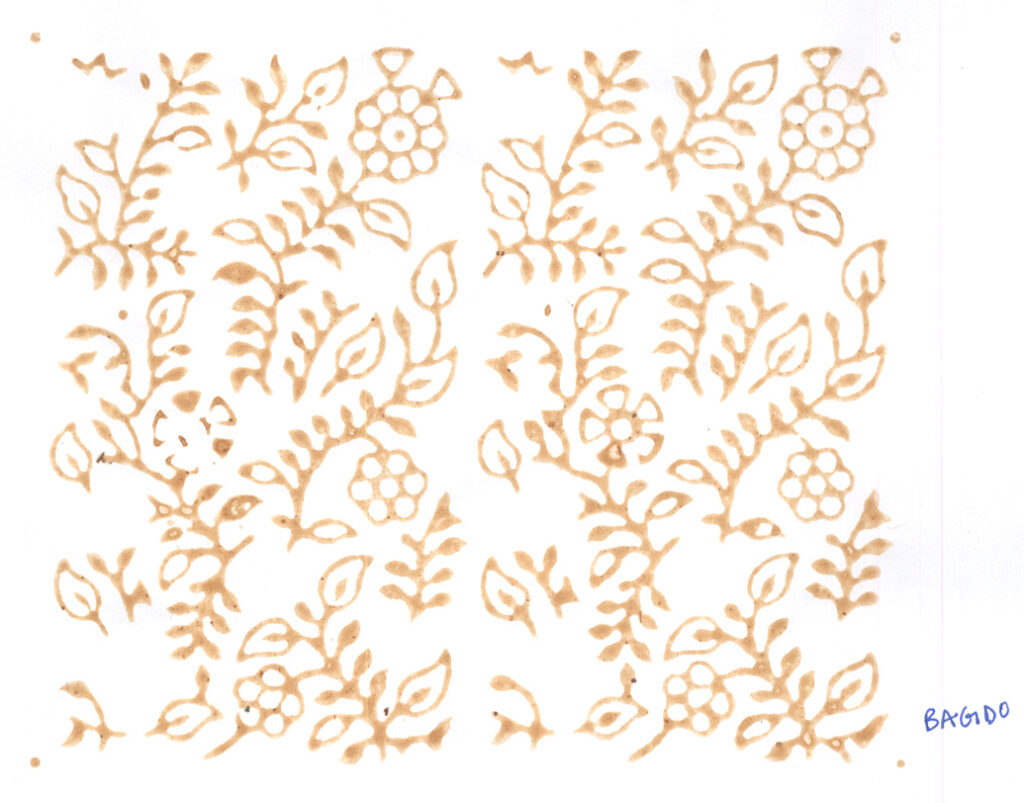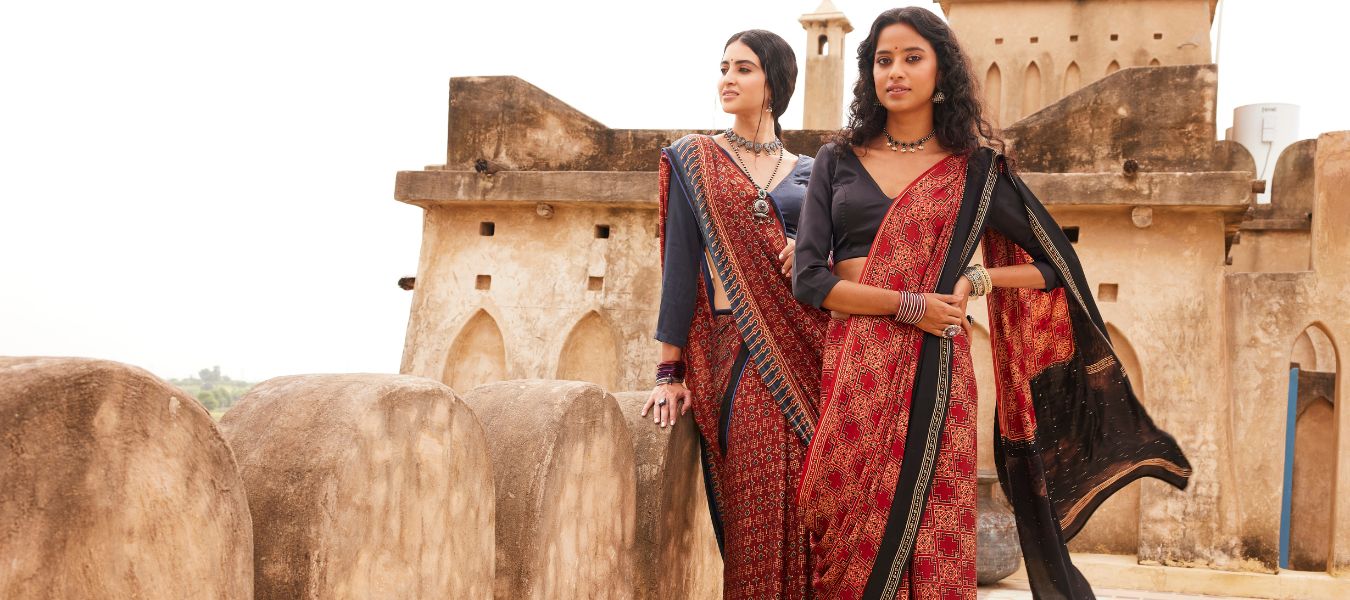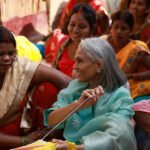Art travels beyond borders, carried by hands, hearts, and heritage. One such journey is that of Ajrakh, a textile tradition that celebrates symmetry, earthy tones, and cultural depth woven into each thread. More than just a fabric, Ajrakh is a timeless art that has traversed centuries, originating in the Indus Valley civilisation of unpartitioned India, flourishing in Sindh, and later finding new life in the desert stretches of Kutch and Rajasthan.
What sets Ajrakh apart is not only its geometric precision but its historic endurance. For millennia, this craft has remained tethered to the rhythms of nature, with natural dyes, intricate motifs, and skilled craftsmanship echoing stories of sustainability long before it became a modern necessity.




Historic Roots of Ajrakh
Ajrakh is believed to date back nearly 4,000 years, with archaeologists uncovering pieces of printed cloth resembling Ajrakh patterns at the sites of Mohenjo-daro. Its name itself carries meaning- derived from the Arabic word azrak, meaning blue, reflecting the prominence of indigo in its palette. In the medieval era, Ajrakh flourished under royal patronage, adorning turbans, shawls, and garments that symbolised prestige. Communities of Khatri artisans carried the tradition forward, migrating over time and preserving this heritage despite political and geographic shifts.
The Craft of Ajrakh
Made with natural dyes, indigo for its deep blues, madder for rust-reds, turmeric and tamarind for softer hues, Ajrakh is painstakingly created through 14 to 16 stages of resist printing and dyeing. An authentic handcrafted piece can take up to three months to complete.
- It begins with Saaj, where the cloth is washed thoroughly and soaked in a solution of camel dung, soda and castor oil.
- This is followed by Kharhi, a treatment with myrobalan (harda) solution that helps the fabric absorb dyes.
- Next comes resist printing with lime and gum arabica which is applied using hand-carved wood blocks to create the initial design. In some designs, a black iron dye is made from scrap iron, jaggery and water to give the fabric a rustic look.
- This is followed by another resist application using clay and alum, to prevent smudging in the upcoming dye baths.
- The fabric is then dipped in its first indigo bath with a traditionally prepared mixture of indigo dye from indigo leaves, lime and jaggery. This gives Ajrakh its iconic rich natural blue hue. The indigo dipping process is repeated after a few days to deepen the color.
- Once the dye sets, the fabric is washed in plain water to remove excess residues and become ready for the concluding step.
- The final stage involves boiling the fabric in a mix of alizarin and tamarix flower for the warm red tone.
- To enhance depth, another round of resist printing is carried out with clay and alum to give it the signature touch and feel of a true Ajrakh.
Ajrakhpur: A Living Legacy
Today, Ajrakh finds one of its strongest voices in Ajrakhpur, a village in Kutch, Gujarat, founded after the 2001 earthquake displaced many artisan families. Here, generations of Khatri block printers continue to safeguard the heritage of their forefathers. Their workshops are not only production hubs but living museums of knowledge, where every wooden block, every indigo vat, and every resist print speaks of continuity and resilience.
Ajrakh from Ajrakhpur is recognised by the Craftmark certification, a symbol of authenticity that ensures the craft is both genuine and ethically made. This mark upholds the integrity of artisanship in a market often flooded by imitations.
Variations Across Regions
While Ajrakh is anchored in its cultural essence, its interpretations vary across regions. In Barmer, Rajasthan, Ajrakh motifs are adapted with regional flair, while in South Punjab (unpartitioned India’s later Sindh region), a style known as Sajarak evolved, distinct in its vibrant cyan tones. Each variation tells its own local story while honouring a shared ancestral art.
A Piece of Sustainability
At its core, Ajrakh is a sustainable textile. Its reliance on natural dyes ensures it is free from harmful chemicals, making it safer for both the environment and the wearer. The absence of machinery, with processes powered by manual labour and natural elements, lowers its carbon footprint and makes it one of the most eco-conscious crafts in India’s textile heritage.
Ajrakh is thus not just a fabric but a cultural and ecological statement, a textile where history, craftsmanship, and sustainability converge. It is an art form that continues to whisper stories of ancient hands while carrying the spirit of Indian heritage into the future.




